Turmeric is a spice commonly used in Indian and Asian cooking, and gives curry it’s yellow colour. The spice comes from the dried and powdered root of the turmeric plant, Curcuma longa, from the ginger family. Turmeric, along with it’s active compound, curcumin, has being hailed as a superfood in recent years and has been appearing in coffee shops as turmeric lattes and in health food stores as supplements. But what does the evidence actually say? Let’s investigate.

Traditional uses
Besides being used in cooking and as a food colour and dye, turmeric has been used in both traditional Indian (Ayurvedic) and Chinese medicine to treat a range of conditions for thousands of years.
What does the science say?
The active compound in turmeric is the polyphenol, curcumin. A teaspoon of turmeric will provide about 100-150mg of curcumin, although this will vary from plant to plant. The amount of curcumin used in some scientific studies is quite high, ranging from 80mg to 200mg.
Curcumin isn’t well absorbed by the body or very available for the body to use. But the active compound in black pepper, piperine, increases it’s bioavailability by 2000% (wow!) while the addition of fat improves absorption.
The half life of curcumin (the time for the activity of the compound to reduce from 100% to 50%) is quite short. Traditional Indian diets where curry is eaten twice a day would provide a regular source of curcumin.
Many of the studies reported in the scientific literature are based on in vitro (think experiments done in petri dishes) experiments or in animals however there have been a number of observational or randomised human studies which have shown positive effects of turmeric or curcumin. Many of these studies have only small numbers of participants or are short term or some show contradictory results, so more large scale, well designed research is needed to develop definite recommendations on how much to have in what form for particular conditions.
So what exactly does turmeric or curcumin do?
Curcumin has been shown to have anti-inflammatory and antioxidant properties, very strong anti-inflammatory properties.
What is the big deal about foods which contain chemicals that have anti-inflammatory properties? Well, while we need short term inflammation to deal with bacteria and other invading pathogens it is thought that many of the chronic conditions prevalent in our society today could be due to chronic (long term) inflammation. So a reduction in chronic inflammation is good for our health.
Curcumin also is a powerful antioxidant, which reduces damage from natural processes occurring within the body and which cause ageing.
Research is showing:
- There’s quite good studies have shown the symptoms of arthritis, a condition of inflammation in the joints, can be treated with curcumin. The effect of commercially available anti-inflammatory treatments is quite similar to curcumin, but it gives us options.
- Other research shows turmeric or curcumin can reduce total and LDL (‘bad’) cholesterol and triglycerides (fat in the bloodstream) while increasing HDS (‘good’) cholesterol in the blood, long term this could help slow or reduce the development of cardiovascular disease.
- Turmeric can reduce blood glucose levels in people with pre-diabetes or diabetes but not those who do not have these conditions.
- There’s good evidence that curcumin improves the symptoms of depression and anxiety and possibly improves memory and elevates mood.
- There’s also evidence that curcumin may be a useful cancer treatment as well.
It seems too good to be true! Is there any reason we should be cautious about having turmeric or curcumin?
Caution
Turmeric does have some effects which you should talk to your doctor about before taking supplements, as it may affect your need for medications:
- It slows blood clotting, so if you take any blood thinning medications or are planning surgery talk to your doctor.
- As it can lower blood glucose levels in people with pre-diabetes or those living with diabetes, if you are taking medication which might cause hypoglycaemia talk to your doctor.
- It can cause stomach upsets in some people. If this is you, do the benefits outweigh the advantages? Talk to your doctor.
- As curcumin may act like the hormone, oestrogen, it may make hormone sensitive conditions worse or increase their risk. Breast cancer, uterine cancer, ovarian cancer, endometriosis, are all possibly affected. Until more is known if this conditions are a concern for you, talk to your doctor or specialist and be cautious.
- And for those who are professional sports people, curcumin can cause false positive drug tests so isn’t recommended.
- Safety when used in pregnancy and while breastfeeding has not been confirmed so it is recommended to not take supplements during this important time.
Food is the best medicine
Unless you have a specific health concern, follow healthy eating recommendations and include turmeric in your eating. Include it to flavour curries, colour salads or baking, have it in a latte instead of a coffee occasionally.
Check out my dahl recipe, below.
To sum up
- The active compound in turmeric, curcumin, is a potent anti-inflammatory, anti-oxidant chemical.

- Curcumin is better absorbed with fat and is more bioactive with black pepper or piperone.
- If you currently take medication, talk to your doctor to make sure you don’t have to alter your dosage.
- Curcumin supplements are not recommended while pregnant or breast feeding.
- Research shows turmeric or curcumin is useful for:
- Improving some blood markers for cardiovascular disease
- Decreasing blood glucose levels in people living with pre-diabetes or diabetes
- Improves mood, memory and decreases depression and anxiety
- May be used to treat cancers in the future.
- And it tastes good!
Enjoy!
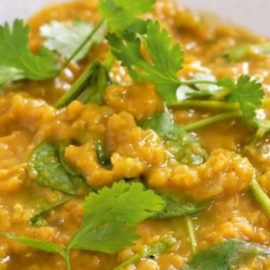
Yellow lentil dahl with spinach
Ingredients
- 2 onions chopped
- 2 garlic cloves chopped
- 2 teaspoons grated ginger
- 1 long green chilli finely chopped
- 1 tablespoon mustard seeds
- 1 teaspoon ground cumin
- 1 tablespoon ground coriander
- 1 tablespoon ground turmeric
- 1 teaspoon garam masala
- 400 g yellow split peas rinsed and drained
- 800 g can chopped tomatoes
- 3 cups Massel style liquid stock 750ml
- 100 g baby spinach leaves
- to taste coriander chopped or torn (optional)
Instructions
- Heat oil in a pan over medium heat. Add onion and cook for 2-3 minutes, stirring, until softened. Add garlic and ginger, and cook for a further minute. Stir in spices, then cook for 30 seconds until fragrant.
- Add lentils, stock, tomatoes and 1 1/2 cups (375ml) water extra. Bring to a simmer, then reduce heat to low and cook for 1-1 1/2 hours, stirring occasionally, until the lentils are tender and dahl is thick and rich.
- Stir through baby spinach.
- Sprinkle with coriander (optional).
Notes
register here to receive Dale’s blog update in your inbox each week.
contact dale if you would like help to work toward achieving your health goals.

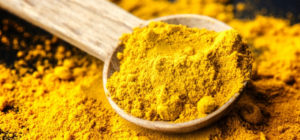


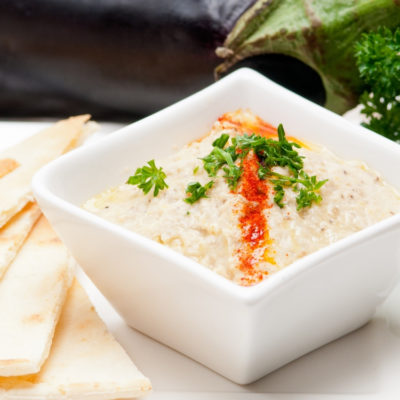
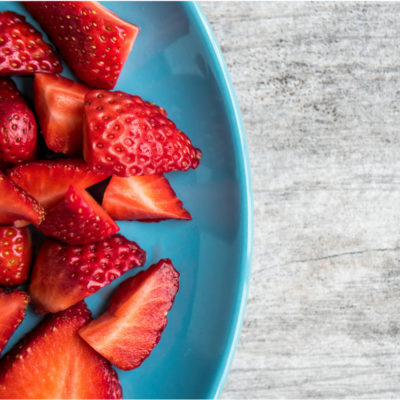
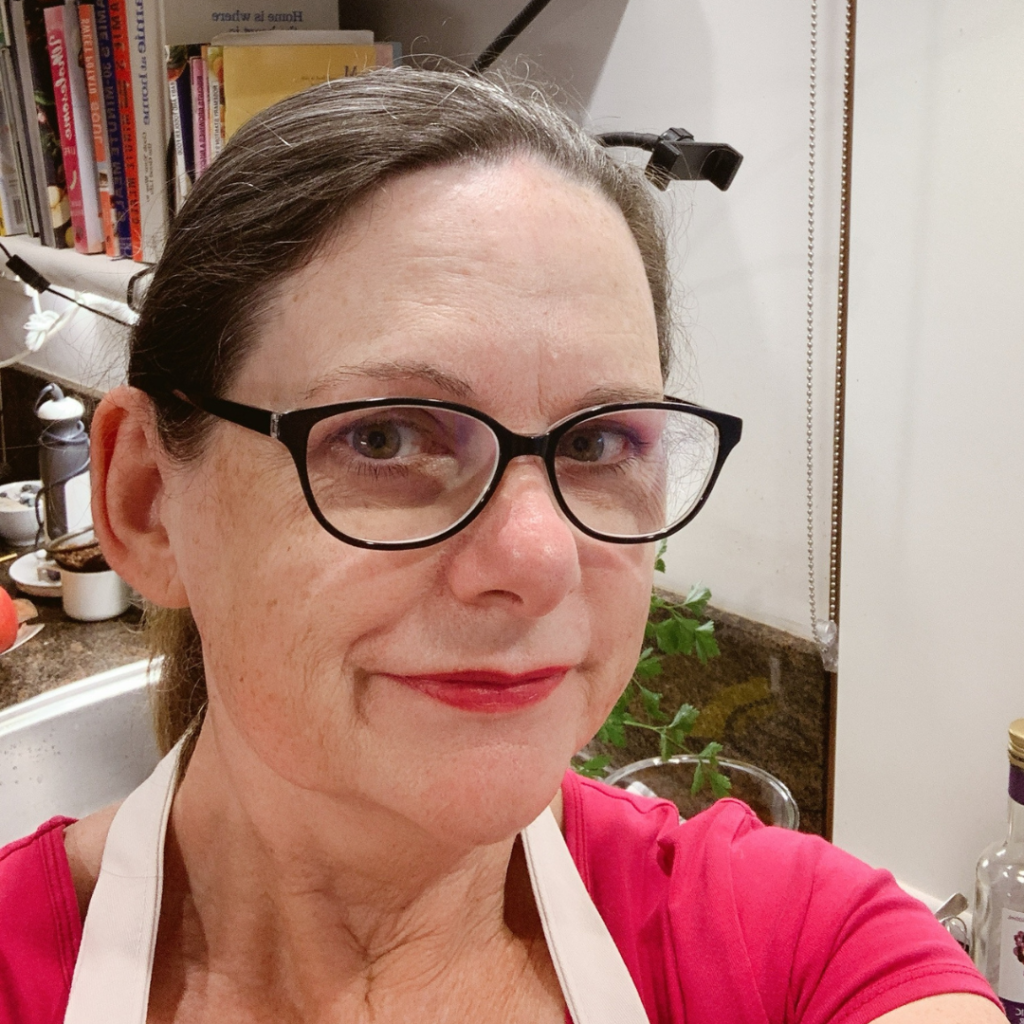
Comments (1)